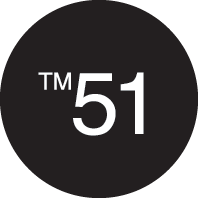MARTE BJØRNDAL -
Androgyne Gymnastic City
Artist Marte Bjørndal moves the nomadic meridians printing a personal geographic route, after which she examines the depths of human non-power through the depersonalization of the society. Leaves tracks from Brazilian faeries to Moscow and Africa: she meets people from a wide variety of social classes having always one thing in mind: how to improve human life; how to get institutions out of lethargy and controlled power, and to show that each individual is important.
Marte’s last spot, for now, is one of the richest countries in the world, her ownland, Norway where she examines what are the mechanisms of power that, in fact, make us no longer talk about inequality as a structure. At best we are ashamed. With the title of the exhibition Androgyne Gymnastic City the artist openly provokes nearly the almost oligarchic suppression of the critical potentials that is evident on all levels of the hard/centric state dispositives in the opposition to democratic assemblages operating as critical possibilities. The leitmotif of an androgynous city is the Super Sadist Duck Judge. Iconographically, it fringes the Death from the Passionate Court of the Jan van Eyck diptych. Instead of a skeleton with spread wings as the personification of the death of Marte, an androgynous is displayed embodied in the head of an alien and of something that is supposed to look like a human body. The inscription on the painting, through the noun “judge”, directly evokes a passage of the deceased/living. It is interesting that the artist emphasizes a sadistic moment up to the point where masochism is almost omitted, but so much present that the sadism would have a purpose. Duck is in fact any politician/judge and his everyday speech is reduced to general phrases especially when his place and time are ignored.
The androgynity as ambiguity or meaninglessness is reinforced by the inscription Fuckoff/ Wellcome that undoubtedly intentionally emphasizes the boundaries between the good and the evil allows the equalization of contradictions in the eternal cyclical motion that is the essence of the Kafka’s process. It is clear that the European art after the fall of the Berlin Wall does not reflect the social content in its thematic, but is rather directly organized by the mere signifiers’ economy, whose sole secondary output is the thematic. The androgynity has turned out to be a logical and a political juncture from which Marte examines what has happened to the consciousness of man, what has happened with the autonomy of thought and speech, and what happens with the mental hygiene of each of us. The consequences are that, as citizens, we begin to be ashamed of the sick, hungry, those who are protesting. However, it is something that is dirty, noisy, dark, impenetrable, something that is not politically correct in the system. Marte shows that the lack of influence of each individual is a lack of a system that is repeated from one decade to the other. A man is either not capable or has no way to learn from previous mistakes.
Beautiful and just things should be presented with an individual metric unity, in another case they will reflect their complete instability. It implies that a person must constantly be in a concrete life-resonance to participate in the acute issues of his time. In other words, he must be aware of his role and his position, whether he lives on the grounds of socialism, democracy or even totalitarianism; a constant shift of the public and the private discourse maintains the necessary tension to ensure that the general or an individual does not lead to anarchy or totalitarianism. That is exactly what Marte is doing: starting from her personality, character and her work she gives a chance to the essence of Sartre (free choice, self-assertion and self-determination) and thus becomes an example for all of us. The provocative, but everyday issues of the basic human rights are her cornerstone, which bravely warns those who may have mostly contributed to this.
Sladjana Dragicevic Trosic/ Art historian
TM51 Window Gallery (Fridtjof Nansens plass 6) og TM51 Infill (Parkveien 5)
Utstillingsåpning 12 September 2019 kl. 18.00, Fridtjof Nansens plass 6

